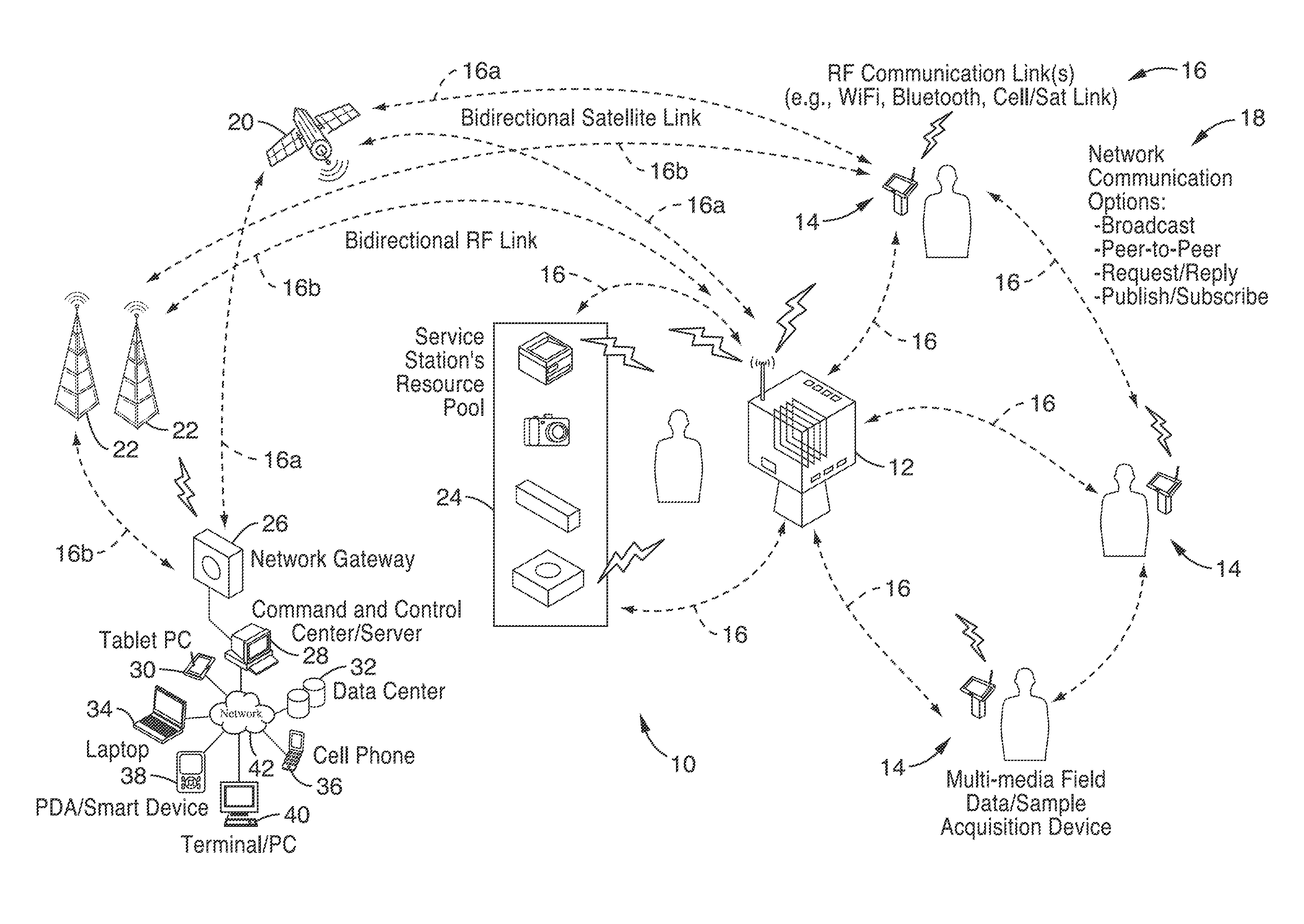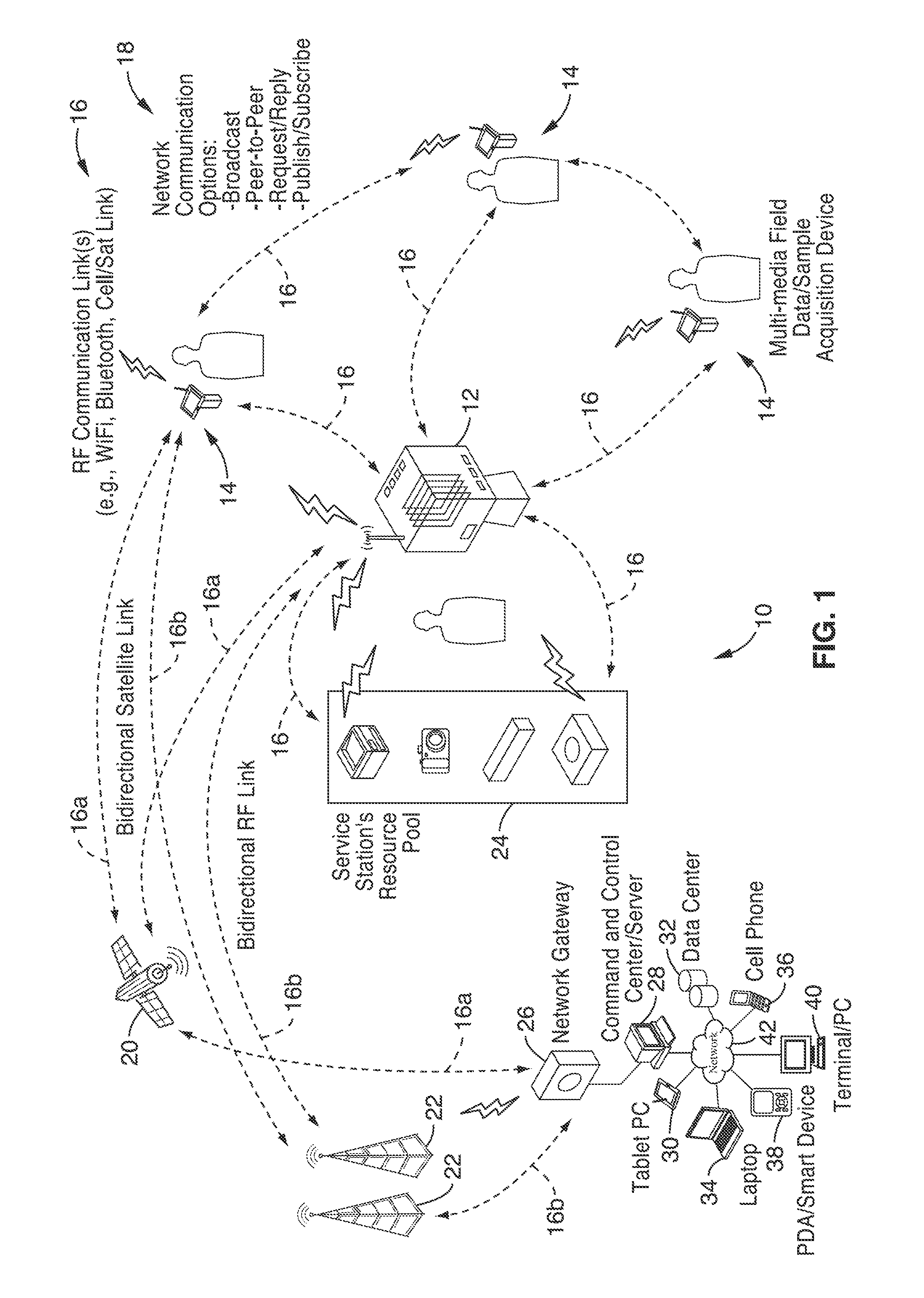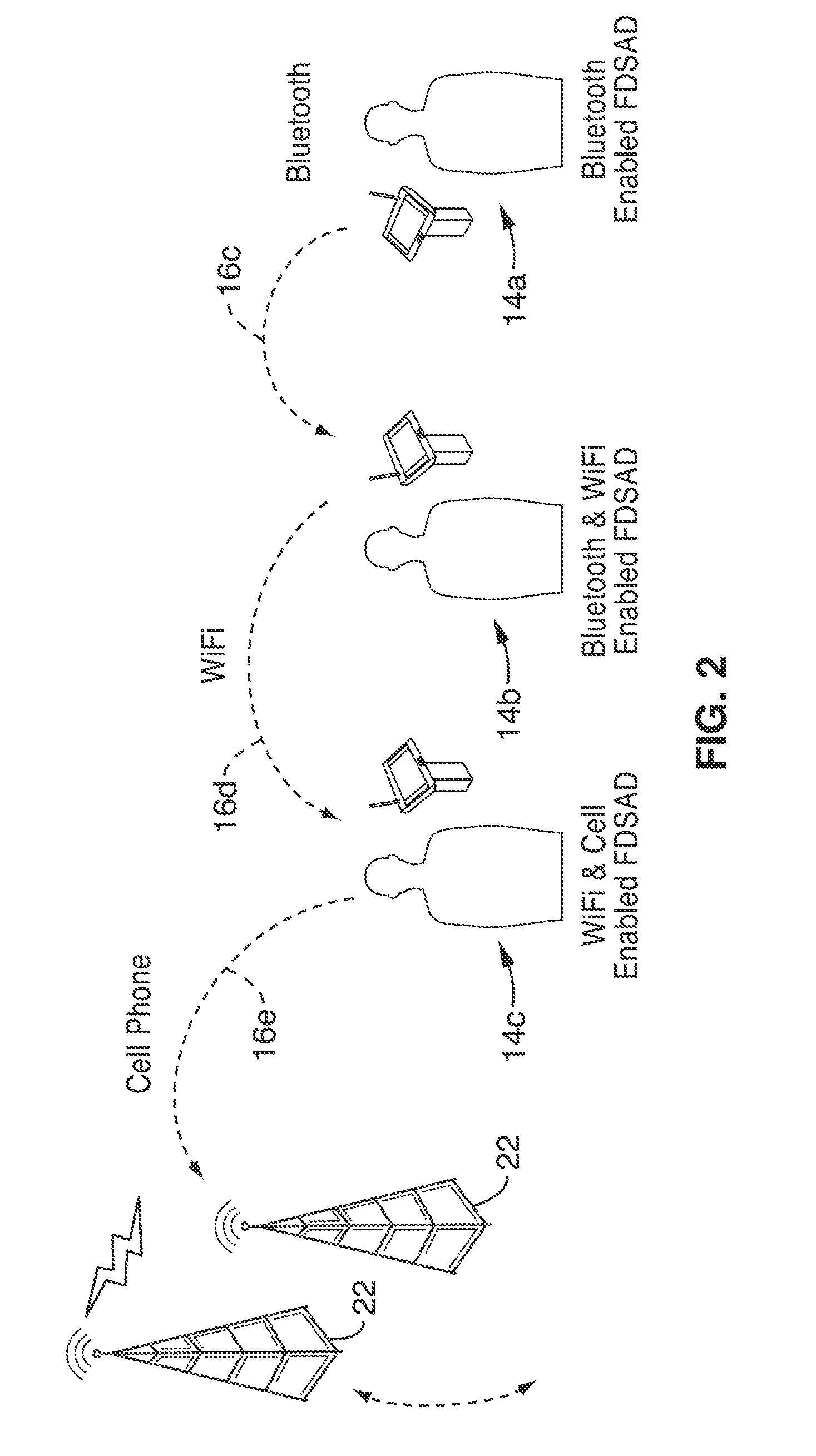Flexible, scalable, service-oriented surveillance system architecture
a service-oriented, flexible technology, applied in the direction of frequency-division multiplex, multiplex communication, instruments, etc., can solve the problems of inability of environmental surveillance devices and operators to share valuable resources and information in real-time, disjointed and relatively uncoordinated environmental surveillance process, traditional sampling strategies and approaches were not up to the task, etc., to achieve high-scale
- Summary
- Abstract
- Description
- Claims
- Application Information
AI Technical Summary
Benefits of technology
Problems solved by technology
Method used
Image
Examples
Embodiment Construction
[0034]Referring more specifically to the drawings, for illustrative purposes the present invention is embodied in the apparatus generally shown in FIG. 1 through FIG. 6. It will be appreciated that the apparatus may vary as to configuration and as to details of the parts, and that the method may vary as to the specific steps and sequence, without departing from the basic concepts as disclosed herein.
[0035]Referring to FIG. 1, the system architecture 10 includes two types of system participants, Service Stations (SS) 12 and Field Data / Sample Acquisition Devices (FDSAD) 14 that communicate over radio frequency (RF) communications links 16 (e.g., WiFi, Bluetooth, cell / sat link) using a network communications option 18 selected from broadcast, peer-to-peer, request / replay, and publish / subscribe. FIG. 1 illustrates bidirectional satellite links 16a and bidirectional RF links 16b as included in the communications links 16, as well as a satellite 20 and RF transmission towers 22. A service...
PUM
 Login to View More
Login to View More Abstract
Description
Claims
Application Information
 Login to View More
Login to View More - R&D
- Intellectual Property
- Life Sciences
- Materials
- Tech Scout
- Unparalleled Data Quality
- Higher Quality Content
- 60% Fewer Hallucinations
Browse by: Latest US Patents, China's latest patents, Technical Efficacy Thesaurus, Application Domain, Technology Topic, Popular Technical Reports.
© 2025 PatSnap. All rights reserved.Legal|Privacy policy|Modern Slavery Act Transparency Statement|Sitemap|About US| Contact US: help@patsnap.com



